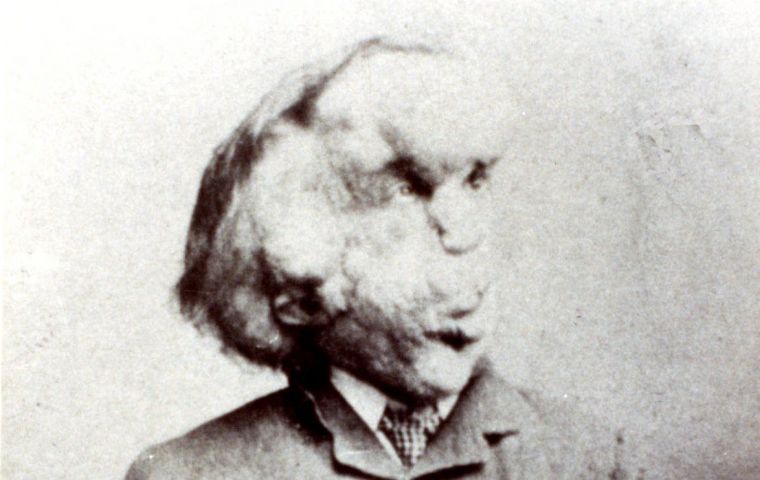MercoPress. South Atlantic News Agency
Unmarked grave of the Elephant Man traced at City of London cemetery
 After a miserable adolescence and time as a travelling exhibit, Leicester-born Merrick ended up at what was then called the London Hospital in Whitechapel
After a miserable adolescence and time as a travelling exhibit, Leicester-born Merrick ended up at what was then called the London Hospital in Whitechapel The unmarked grave of Joseph Merrick, who is better known as the Elephant Man, has been traced after nearly 130 years, it has been claimed. Merrick had a skeletal and soft tissue deformity which saw him as a freak show attraction, then a medical curiosity.
His skeleton has been preserved at the Royal London Hospital since his death. But author Jo Vigor-Mungovin says she has now discovered Merrick's soft tissue was buried in the City of London Cemetery after he died in 1890.
After a miserable adolescence and time as a travelling exhibit, Leicester-born Merrick ended up at what was then called the London Hospital in Whitechapel, east London, where he surprised staff by proving to have an intelligent and sensitive personality.
He became a minor celebrity and in May 1887 was visited by Alexandra, Princess of Wales, who afterwards sent him Christmas cards. After his death, Merrick's body was dissected and his skeleton preserved as an anatomical specimen.
Merrick was born in August 1862 in Leicester and his condition did not develop until he was five years old. Following years in a Leicester workhouse, he contacted a showman who set him up as a travelling exhibit in 1884. After being robbed and abandoned he went to London in June 1886 and contacted doctor Frederick Treves, who found him a room at the London Hospital.
His head measured 36 inches (91cm), his right wrist 12 inches (30cm) and one of his fingers 5 inches (13cm) in circumference. He died on 11 April 1890, aged 27, asphyxiated by the weight of his own head, apparently after trying to lie down.
The cause of his condition is still uncertain but many researchers favor Proteus syndrome, a rare genetic disorder His story has inspired a number of books, an award-winning play and a film starring John Hurt
Mrs Vigor-Mungovin, who has written a biography of Merrick, said a story about his soft tissue being buried had not been followed up due to the number of graveyards in use at the time.
“I was asked about this and off-hand I said 'It probably went to the same place as the [Jack the] Ripper victims', as they died in the same locality.
”Then I went home and really thought about it and started looking at the records of the City of London Cemetery and Crematorium near Epping Forest, where two Ripper victims are buried.
“I decided to search in an eight-week window around the time of his death and there, on page two, was Joseph Merrick.”
The detailed Victorian records make it “99% certain” this is the Elephant Man, said Mrs Vigor-Mungovin. “The burial is dated 24 April 1890, and Joseph died on 11 April.
”It gives his residence as London Hospital, his age as 28 - Joseph was actually 27 but his date of birth was often given wrong - and the coroner as Wynne Baxter, who we know conducted Joseph's inquest.
“Everything fits, it is too much to be a coincidence.”




Top Comments
Disclaimer & comment rulesCommenting for this story is now closed.
If you have a Facebook account, become a fan and comment on our Facebook Page!